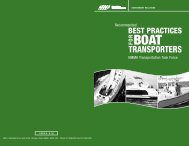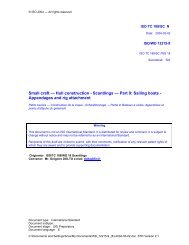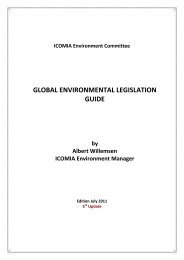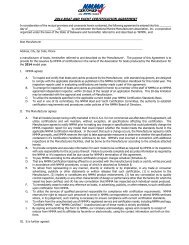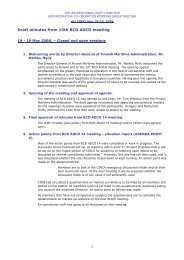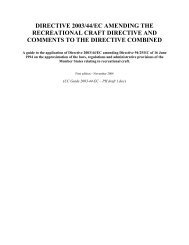Intellectual Property Protection and Enforcement Manual - Ipr-policy.eu
Intellectual Property Protection and Enforcement Manual - Ipr-policy.eu
Intellectual Property Protection and Enforcement Manual - Ipr-policy.eu
You also want an ePaper? Increase the reach of your titles
YUMPU automatically turns print PDFs into web optimized ePapers that Google loves.
Br<strong>and</strong> <strong>Protection</strong> <strong>Manual</strong><br />
Recordation of Your <strong>Intellectual</strong> <strong>Property</strong><br />
Trademark owners who duly register their rights with the Trademark Office <strong>and</strong> copyright holders<br />
who register their works with the U.S. Copyright Office may record these rights with Customs <strong>and</strong><br />
Border <strong>Protection</strong>. CBP actively monitors imports in order to prevent the importation of counterfeit<br />
<strong>and</strong> pirated goods. This should be any br<strong>and</strong> owner’s first (but certainly not only) line of defense<br />
against the unlawful importation <strong>and</strong> exportation of counterfeit <strong>and</strong> pirated goods.<br />
Recordation of Trademarks 20<br />
To avail themselves of CBP’s assistance, business owners must first have a registered trademark.<br />
Electronic recordation of copyrights with CBP is available at https://apps.cbp.gov/e-recordations.<br />
Recordation of the registered trademark becomes effective upon approval by CBP <strong>and</strong> remains in<br />
force for the duration of the registration period.<br />
Any imported article found by CBP to bear a counterfeit mark is then subject to seizure by CBP.<br />
Upon seizure, the importer is given written notice of such seizure <strong>and</strong> has 30 days to establish any<br />
claimed exemptions from the prohibition. Failing that, the importer’s goods become subject to<br />
forfeiture proceedings. This procedure involves the constitutionally required notice <strong>and</strong> hearing<br />
elements for any administrative adjudication. Upon notice, the importer of the counterfeit goods has<br />
the opportunity to petition for relief from the forfeiture. The articles seized will be forfeited unless<br />
the trademark owner, within 30 days of notification, provides written consent to importation of the<br />
article, exportation, or any other appropriate disposition. If the importer fails to obtain such consent,<br />
the articles bearing the counterfeit trademark are disposed of by CBP.<br />
In addition, CBP, in the course of examining imported goods, may disclose to the trademark owner<br />
information to obtain assistance in determining whether an imported article bears an infringing<br />
trademark. Further, at any time following presentation of the goods for CBP examination, but<br />
prior to seizure, CBP may provide a sample of the suspect goods to the trademark owner for<br />
examination or testing. This examination helps determine whether the imported article bears an<br />
infringing trademark, provided that the trademark owner furnishes a bond holding CBP harmless<br />
from any loss or damage resulting from the furnishing of the sample. If CBP makes a determination<br />
of infringement on its own <strong>and</strong> detains the goods, CBP will provide the trademark owner with the<br />
foregoing information within 30 days of the date of detention.<br />
Recordation of Copyrights 21<br />
As with trademarks, in order to be recorded with CBP, a copyright must be registered at the U.S.<br />
Copyright Office. Electronic recordation of copyrights with CBP is available at https://apps.cbp.<br />
gov/e-recordations. The application to record must also be accompanied by a copy of the certificate<br />
of registration issued by the U.S. Copyright Office, five photographic or other likenesses of the<br />
copyrighted work, <strong>and</strong> a fee. Recordation becomes effective upon approval by CBP, <strong>and</strong> it remains<br />
in force for 20 years unless the copyright ownership of the recordant expires before that time. If the<br />
Page 7



